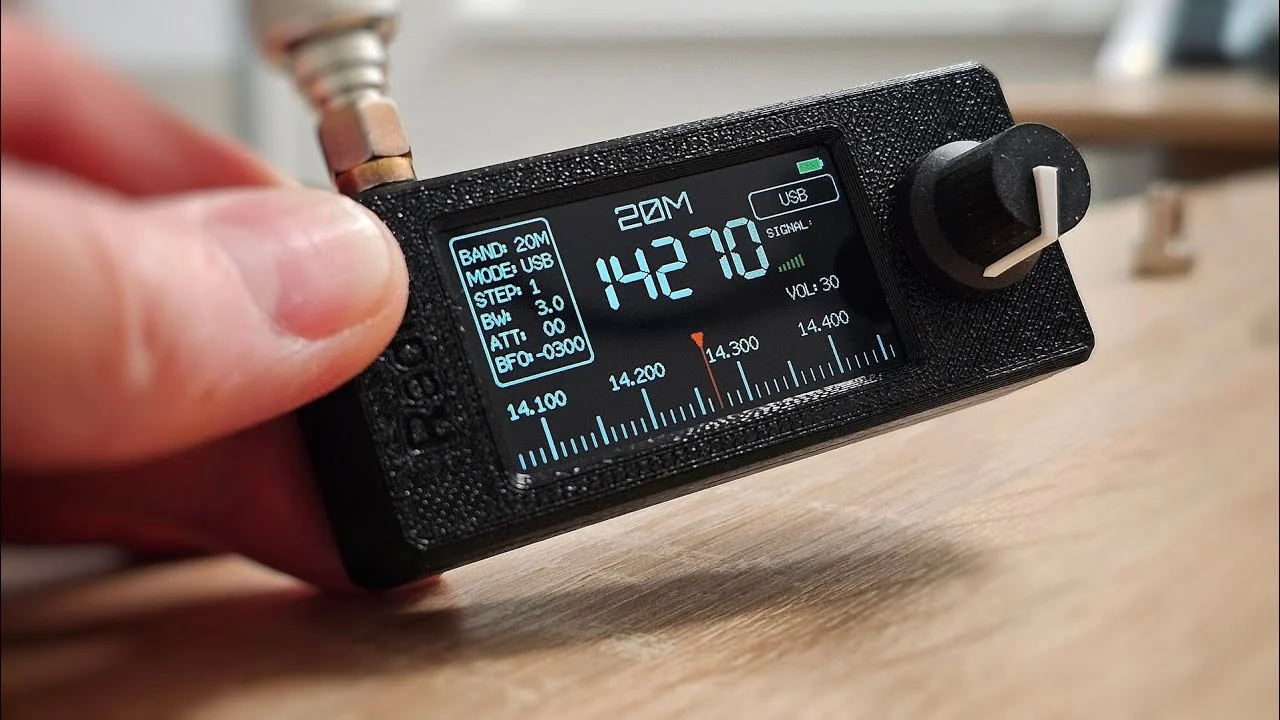A Deep Dive into the Ver.2 Pocket SSB Receiver SI4732 Chip

Ver.2 Pocket SSB Receiver SI4732: In the world of amateur radio and shortwave listening, the Ver.2 Pocket SSB Receiver powered by the SI4732 chip has emerged as a compact yet powerful tool for enthusiasts. With support for a broad frequency range and advanced tuning features, this device delivers impressive performance for its size. In this article, we’ll explore the hardware, capabilities, and advantages of the Ver.2 Pocket SSB Receiver in detail.
What is the SI4732 and Why Is It Important?
The SI4732 is a single-chip broadcast AM/FM/SW/LW radio receiver developed by Silicon Labs. It belongs to the SI4700 family but offers more advanced features, especially its support for SSB (Single Side Band) demodulation — a vital function for shortwave and amateur radio users.
The chip integrates:
-
AM (Medium Wave) and FM reception
-
Shortwave (SW) support from 2.3 MHz to 30 MHz
-
Longwave (LW) capabilities
-
Single Side Band (SSB) for upper and lower sideband reception
-
Digital tuning with step size customization
-
RDS (Radio Data System) decoding on FM
The SI4732 is especially appreciated in DIY electronics because of its compatibility with Arduino and ESP32 microcontrollers, which allow enthusiasts to build custom radio receivers with touch screens, rotary encoders, and battery support.
The Ver.2 Pocket SSB Receiver builds on this foundation by offering a finished product — or near-finished DIY kit — with all of the above integrated into a compact, portable unit.
Key Features of the Ver.2 Pocket SSB Receiver
The Ver.2 Pocket SSB Receiver stands out because of the way it integrates the SI4732 chip with a user-friendly interface and additional features. Here’s what typically comes with the device:
1. Frequency Coverage
-
FM: 64–108 MHz (depending on firmware)
-
AM/MW: 520–1710 kHz
-
LW: 150–520 kHz
-
SW: 2.3–30 MHz
-
SSB: Both USB (Upper Side Band) and LSB (Lower Side Band)
This wide range allows users to explore global shortwave broadcasts, local AM/FM stations, and even amateur radio transmissions on SSB modes.
2. User Interface
-
Color TFT or OLED display (typically 1.8″ to 2.4″)
-
Rotary encoder for tuning
-
Push buttons for volume, mode change, and scanning
-
Touch-screen options available in some builds
The interface is often based on open-source firmware such as PU2CLR’s SI473X Arduino Library, which gives users the ability to modify settings like bandwidth, tuning step, and squelch.
3. Power and Portability
-
Runs on a 3.7V lithium-ion battery (e.g., 18650 cell)
-
Rechargeable via USB Type-C or micro USB
-
Compact PCB size allows true pocket-sized portability
-
Battery life varies from 5 to 10 hours depending on backlight, speaker usage, and volume
4. Audio Output
-
Built-in speaker for standalone listening
-
3.5mm headphone jack for private or clearer listening
-
Some models include low-noise amplifiers or support for external antennas for enhanced reception
Applications and Use Cases
While traditional radios focus only on FM or AM bands, the Ver.2 Pocket SSB Receiver appeals to a broader audience. Its multi-band, SSB-capable functionality makes it incredibly versatile.
1. Shortwave Listening (SWL)
With frequencies up to 30 MHz, the SI4732-based receiver can pick up international broadcasts, pirate radio, and utility stations. Shortwave radio remains an important medium in many regions for uncensored news, cultural content, and emergency broadcasting.
2. Amateur Radio Monitoring
SSB support enables listeners to tune into ham radio bands (like the 20m or 40m bands) and listen to amateur operators from around the world. While it can’t transmit, it’s a great tool for learning band activity, QSO formats, and propagation behavior.
3. Portable Scanning
Because of its compact design, it’s ideal for field use, camping, hiking, or emergency situations. With a telescopic or external antenna, users can capture distant signals even from remote locations.
4. Educational and DIY Projects
Hobbyists and students use the Ver.2 Pocket Receiver to learn about radio waves, signal propagation, demodulation, and microcontroller programming. It’s also an entry point for those learning electronics, radio theory, or building their own SDR (Software Defined Radio) alternatives.
Advantages Over Other Low-Cost Radios
There are many radios available online in the budget range, but few offer the same versatility and control as a well-built SI4732-based receiver. Here’s how it compares:
1. SSB Capability
Most low-cost shortwave radios (like the Retekess V115 or Tecsun PL-310) do not support SSB, making the SI4732-based device far more appealing to ham radio enthusiasts.
2. Custom Firmware
Thanks to open-source contributions (notably from PU2CLR and others), users can flash new firmware to enhance features, fix bugs, or customize the UI — something that’s impossible on closed hardware.
3. DIY and Repair Friendly
Because it is based on Arduino-compatible components, you can repair, upgrade, or tweak nearly every aspect of the device, from screen to controls to power supply.
4. Cost Efficiency
A typical Ver.2 SI4732 receiver ranges from $30 to $60 depending on seller, features, and display type. For that price, it outperforms many more expensive legacy radios in terms of versatility.
Limitations and Considerations
While the Ver.2 Pocket SSB Receiver is impressive, it does come with limitations:
-
Selectivity: Although adjustable, the filter options are not as advanced as those on premium radios (like Tecsun PL-990 or Icom IC-R8600).
-
Speaker Volume: The internal speaker can be quiet, and external audio options are often preferred.
-
Antenna Sensitivity: The included telescopic antenna may need to be replaced with a longer wire or external antenna for optimal shortwave reception.
-
Firmware Complexity: Flashing new firmware requires some basic knowledge of Arduino IDE or ESP32 tools.
Still, for the price, the performance-to-cost ratio is hard to beat.
Conclusion: Is the Ver.2 Pocket SSB Receiver Worth It?
For anyone interested in radio listening, amateur radio monitoring, or learning electronics, the Ver.2 Pocket SSB Receiver with the SI4732 chip is a game changer. It brings advanced features like SSB, digital tuning, and open-source control into a device that can literally fit in your pocket.
It might not replace high-end communication receivers, but it holds its own as a reliable, customizable, and incredibly educational device. Whether you’re a beginner getting into radio for the first time or a seasoned shortwave enthusiast looking for a backup device, this little receiver deserves a place in your toolkit.




